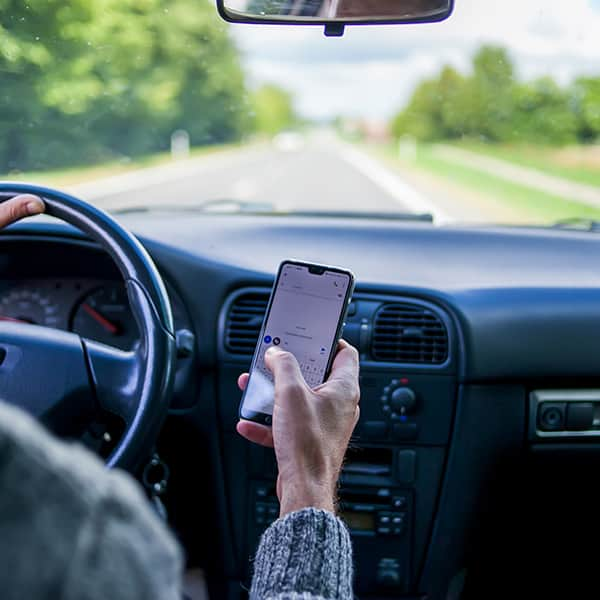
Before heading out on the road, there are some basic traffic rules and safety tips you need to learn. Although these do not cover all Florida laws, it's a good starter guide for the inexperienced driver.
Train Crossing — What do I do?
When you stop for the train, stop at least 15 feet from the track, this gives you a safe distance from the potential overhang of any of the freight cars hitting your car and dragging it after the train.
School Bus Stops
Here's a question that even experienced drivers still ask: When do I stop for a school bus? Well, for one, if the school bus has stopped on the road, you need to stop if you are traveling in the same direction as the school bus. If you are traveling in the opposite direction on the other side of a divided highway with an unpaved space of at least five feet or a raised median or a physical barrier you do not need to stop. In all other circumstances, you must stop. Remember that on a road with a center turn lane you would have to stop for a loading or unloading school bus traveling in the opposite direction.
Emergency Vehicles Approaching!
When an emergency vehicle sounding a siren approaches you, having at least one lighted red/white or blue/white lamp that is visible; a driver must yield the right of way. The driver must immediately drive to a position parallel to and as close as possible to the nearest edge or curb of the highway clear of any intersection and remain there until the emergency vehicle has passed. Keep a foot on the brake so the brake light lets the emergency vehicle driver know you have stopped. Use extreme caution around an emergency situation and follow the directions given by a police officer. Do not approach within 500 feet behind a fire engine vehicle displaying flashing warning lights and sounding a siren.
Road Work Ahead
Drivers must be alert to the changes to the roadway during construction or maintenance. Soft shoulders of the roadway should be avoided. These areas are marked when the pavement does not extend beyond the paved area. These areas can be comprised of dirt, grass, gravel or other materials. Additionally, the driver should be aware of areas where the pavement is in bad condition.
Children at Play
When you are driving through a school zone, playground or parks, a driver should be extremely cautious and reduce speed significantly. Posted speed limits around schools (15 mph or as posted) should be followed.
What's the Speed Limit?
Drivers should be aware that speed limits apply when no visible or noticeable posts are around. In business or residential districts the speed limit is 30 mph unless otherwise posted. If no signs are posted on either the rural interstate limited access highway or the four-lane highway divided by a median strip, the default speed limit is 55 mph.
Distance Between You and the Car In Front of You
To determine if you are following at a safe distance, pick a landmark (a tree, sign, reflector etc.). As soon as the rear of the car you are following passes the landmark you have chosen, count: One thousand and one, one thousand and two. If the front of your vehicle has reached the landmark before you finish counting, you are too close. Back off and try the count until you have enough distance. This is called the two-second rule.
What is Defensive Driving?
Defensive driving simply means being prepared for the worst and always being alert.
Driver Distractions
While driving, we are subject to many distractions, both inside and outside the motor vehicle. These distractions can reduce the driver's concentration on the driving task. Inside your vehicle, devices such as cell phones and stereos can interfere with driving. As of late the use of cell phones, especially texting, has led to many serious crashes. Don't text and drive.
Speeding is Dangerous
Whenever you double your speed, it takes about four times as much distance to stop and your vehicle will have four times the destructive power if it crashes. High speeds increase stopping distance greatly.
Who has the right of way? The law gives the right of way to no one. It only says who must yield (give up) the right of way. Every driver, motorcyclist, moped rider, bicyclist and pedestrian must do every thing possible to avoid a crash.
The Risk of Intersections
Intersections are the scenes of some of the most devastating accidents. Drivers should exercise extreme caution when approaching and proceeding through intersections. Conflicting highways, vehicles making left and right turns and opposing signals all increase the collision potential at an intersection. A driver approaching a blind intersection shall do so with extreme caution and reduced speed. The driver shall yield the right of way whenever it is not safe or prudent for their vehicle to proceed through the intersection. The driver reaching the intersection at the same time as another vehicle shall yield the right of way to the vehicle traveling on a continuing highway.
Here are some resources for online driver education:
Traffic School — Can help lower your car insurance!
Driver Ed — Basic driver ed online for first time drivers.
DATA Course — TLSAE requirement to get your learner's permit

